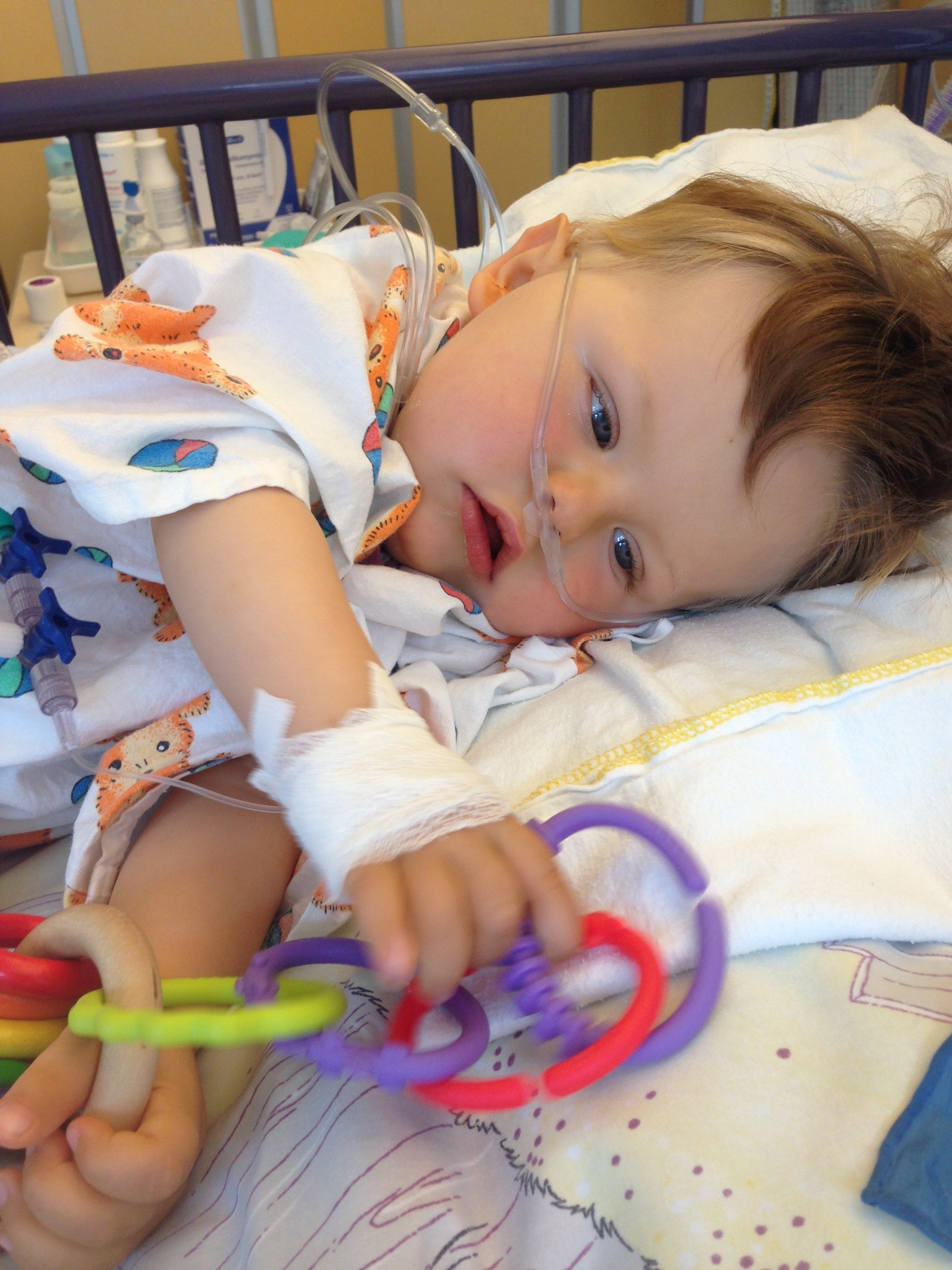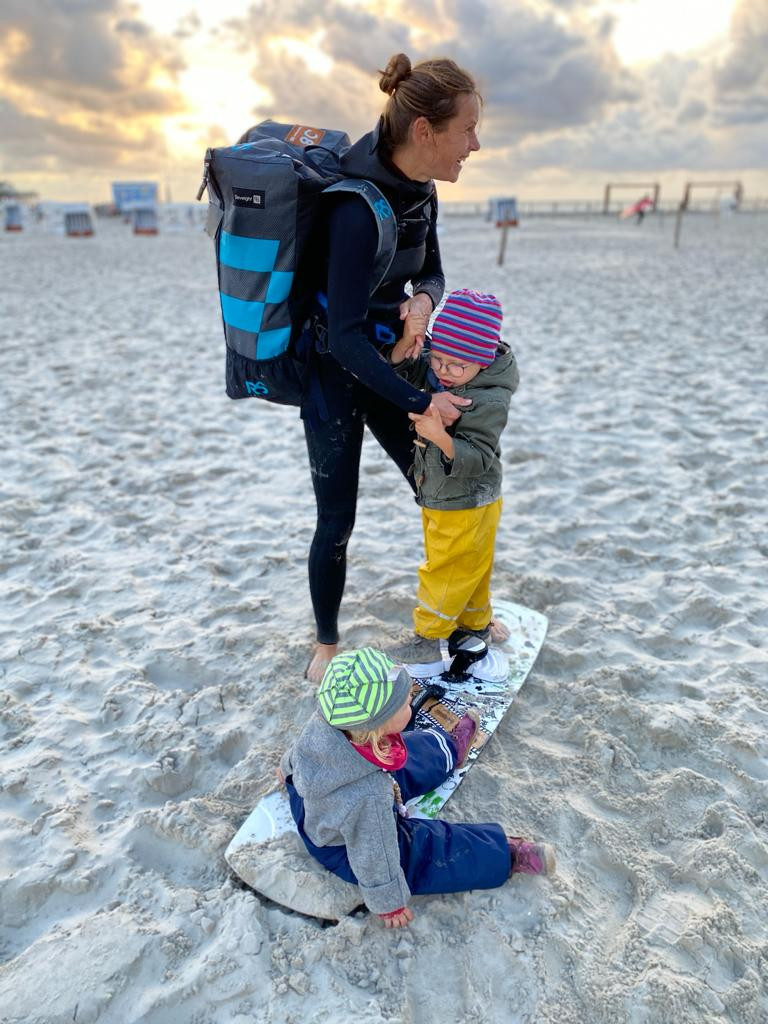Patient # 1 - how it all began!
I am Antje, I am Kitesurfing, I am sailing, I do rock climbing and I travelled the world with my backpack. I have a fantastic job in Tech Innovation and truly believe the world is a fascinating and exciting place to be. When I got pregnant with Finn at 36 I was convinced the world would keep on moving at the same extraordinary pace - how wrong I was.
It is now the 4th day that the birth is overdue, time to go to the hospital to start enforcing it. When the CTG got critical the doctors decided to ramp up the cocktail and it still took us 14 hours to get the little baby into our arms. Unfortunately that wasn´t for long. In the arms of his Papa, Finn stopped to breathe and turned from rose to blue. I will never forget how I was panicking to call the nurses back that left us already alone with the baby. Someone came running, grabbing the baby and running away with him….
Our journey to a diagnosis
We have been lucky and decided for a level one hospital with intensive care for the birth. The next time I saw Finn was in the intensive care unit with lots of doctors around. They explained how they reanimated him and that he needs to be oxygen supported for a while. He is very weak and they recommend some further investigations around this.
The next day he was having the MRT to check if the brain had suffered from the lack of oxygen the day before. Again a couple of doctors and a psychologist came to talk to us to explain the MRT. Finn's connection between both brain halves (Corpus Callosum) is interrupted. “We cannot tell you how, but this normally goes along with an overlaying problem or disease”, the doctors said. “It is an indication for a bigger problem that your son has, you can talk to the psychologist about it.” The psychologist was about half my age and the first thing she told us was to take good care of each other in your relationship as 80% of parents of disabled children get divorced. Here we go, the first time ever I heard the word disabled in connection to my son.
The first months with Finn were keeping us super busy. After 4 weeks he could leave the hospital with an oxygen alarm attached to his little toe, this alarm sound was our daily companion for the first year. A huge diagnostic started and the doctors still tried hard to find out what was wrong. All chromosomes good, metabolism also good and no syndrom was fitting to him. Then the human genetics decided to go for an Exome Analysis to decode his genes. In 2016 this was still not a very common diagnostic and we were happy to get more clarity. This was the first time we heard about AGO2 gene and I remember sitting together with Dr Lessel and trying to follow his explanations.
The new normal
The new normal was spending a lot of time in therapies, living with the absolute uncertainty of what is going to happen and pictures in our head on how a potential future could look like. No one knew the AGO2 gene, no one could tell us what it meant to be affected on this gene. The more grateful we were about the exchanges with Dr Lessel and to be involved in the latest tests they did.
With two years Finn developed seizures that kept us busy and brought several hospital nights. They are coming mostly associated with fever but very regularly.
Finn still could not sit or crawl but developed strategies to overcome his hypotonia. His way to relocate is lying on his back and moving slightly sidewards.
Also he was diagnosed mild deafness and got hearing aids. We started with signals and tried to get him into interaction. At the kindergarden the physiotherapist put him on his feet as much as possible. When he was two and a half years he could sit but was for a long time not able to sit up on his own. “Verticalization is key for his brain development” they said and we trained in all kinds of physical aids.
He got physiotherapy two times a week to strengthen his muscles and once a week we took him to a school to learn signals. We see the cardiologist every 6 month as his heart has only two instead of three heart valves.
We also see the neurologist every year and every time I ask the same question: “What can we do to improve?” and every year I get the same answer: “You can go horse riding and swimming.” Did I mention that am working in Tech Innovation in aerospace? I simply could not believe that this is true as I see so much great tech popping up every day.
Then one day I got the opportunity to apply for a program in Cologne/ Germany that is specialised on kids unable to learn walking. Their training is mainly based on the Galileo vibration therapy and that really worked for us. Finn cannot steer his muscles very well from his brain but the vibrations enforce the muscles to train without using the brain for it. A fantastic shortcut without which Finn probably would still be in a wheelchair.
After the storm
The storm settled and we decided to live our life as normal as possible. When Finn was 1,5 years old I restarted my job and we went back to travelling. Cuba, South Africa, South East Asia and we took Finn with us sailing. At the beginning always with the oxygen alarm attached and later with the emergency treatment for the seizures.
Getting back to normal also meant deciding for a sister for Finn. The best decision ever and Finn is a great big brother to the little Emmi.
With 3,5 Finn made his first steps in a walker and since then we trained and trained to strengthen his legs and muscles. With 4,5 he made his first step alone and we celebrated this a lot. He went to a kindergarten for children with special needs and has a fantastic team around. Anyway a good team is probably the best thing you can have. Physiotherapists that work with him on his dyspraxia and hypotonia, logopedia to work on his mouth and capabilities to interact and then the doctors that take care of the right aids, his heart, his hips and all the little and big issues we are confronted with.
Today Finn is 6 years old, he goes to a special school and is a happy boy. He still cannot say a single word, he is very difficult to handle as he turns around and runs away as soon as you leave his hand, he is falling and still cannot stand up alone again.
I still do not want to believe that horse riding and swimming is all we can do to help and keep investigating solutions that can help Finn to be better off with the world. This website is a first step to create awareness and to inform and maybe to help other families to go find their way.
To all researchers out there: this is an amazingly rare disease and a great opportunity to make a real difference for every single child affected.
Personally, I am back to kitesurfing, sailing and travelling as this empowers me to empower Finn.





